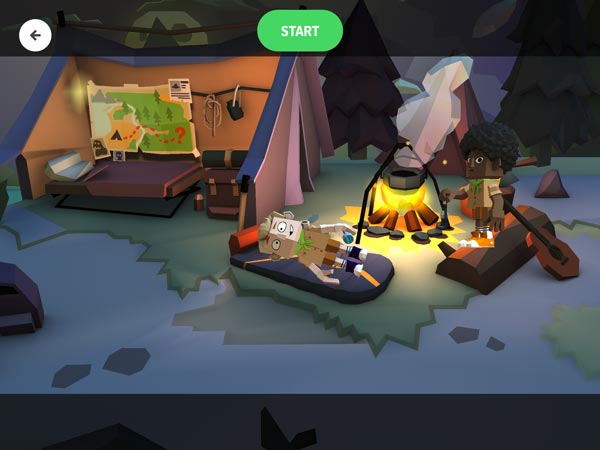Menu
-
- Home
-
About Us
-
The Approach
-
Linking Language & Literacy
-
MindWing Learning
-
Learning Resources
-
SHOP
-
Blog
-
- About MindWing
- Our People
- Contact Us
- Your Account
- Login
-
Spain (EUR €)

Tech Tuesday: Spooky Stories, Revisited with Kick-Offs!
October 24, 2017 3 min read
 The Toontastic app has long been a good companion for interventions with Story Grammar Marker®. The original app, released in the early 2010s, was designed with scaffolding in mind, as a “patch,” so to speak, on the problem of decreased play time and increased expectations for students to “write stories” as they reached first grade. Toontastic has undergone some changes after being purchased by Google a few years ago, and is now available as a free “Toontastic 3D” version for both iPad and Android.
The Toontastic app has long been a good companion for interventions with Story Grammar Marker®. The original app, released in the early 2010s, was designed with scaffolding in mind, as a “patch,” so to speak, on the problem of decreased play time and increased expectations for students to “write stories” as they reached first grade. Toontastic has undergone some changes after being purchased by Google a few years ago, and is now available as a free “Toontastic 3D” version for both iPad and Android.
With Toontastic 3D, you have many of the features that we had in the original version:
- Create an animation simply through the blended recording of touchscreen movement of characters and voice input
- Aim for making one scene or a series of scenes to tell a story
- Choose or draw setting and characters (and add photos to character faces)
- Record and re-record to your heart’s content
- Share your creations to the photos app for exporting
Additionally, Toontastic 3D lives up to its name, by providing scenes that have depth and potential Kick-Offs throughout each setting.
I was initially a bit overwhelmed by the complexity of the scenes in Toontastic 3D, but an introductory lesson for my students helped all of us to become excited by the storytelling potential!
When first using the app, I recommend choosing one scene or theme to explore; this month, try the “Spooky Camp.” Allow your students to choose one character and do a “walkthrough” of the camp without necessarily recording--this will help them see how easy it is to navigate, and in doing so they can observe the elements of the setting: tent, fire pit, stream, forest, and so on.

As you continue, it’s helpful to have students perform a “Kick-Off Hunt”: “What in this setting could make a Kick-Off for our characters?” Spoiler Alert! You could utilize:
- The tent’s map, leading to a mystery location
- A problem with the firepit
- Magic, or maybe poisonous, mushrooms?
- The spooky creatures hiding in the log or cabin
- The mysterious tree totem
- Problems navigating the stream
- Or add/draw characters or representations of events (e.g., encountering a gravestone) to serve as Kick-Offs
I’ve employed a few spins on using Toontastic that you may find good extensions of the narrative learning opportunities.
Build a Story with LEGO
Some time back, I discussed here some ideas for using LEGO baseplates and simple blocks in narrative activities. This fall, especially given that Toontastic 3D has a LEGO-like look and feel, I found these activities to pair very well contextually. Exploring the scenes in the app served to “preload the imagination” (a term used by Social Thinking® particularly in relation to their We Thinkers storybooks providing ideas for follow-up cooperative play activities), and after spending one session constructing the camp setting, had many ideas for Kick-Offs, Reactions, and Conclusions within very cooperative and conversational activities.

Seen above is our camp with tent, river, fire pit and spit, and totem.
Foster Cooperative Play
Besides using the Story Grammar Marker® and its visual story maps or Magnet Sets (large or small) when creating a story with Toontastic, I have found that my students have benefited from the use of a visual play plan. This can be accomplished by breaking down roles and actions (who is going to do what) on a story map. Also, forms for scaffolding play moves can also be found in Social Thinking’s We Thinkers: Volume 2, Social Problem Solvers Set.
 Have a great Halloween!
Have a great Halloween!
Leave a comment.
Comments will be approved before showing up.
